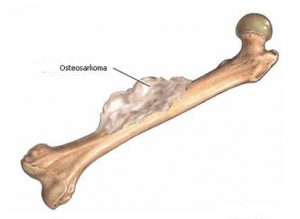- Home
- Editorial
- News
- Practice Guidelines
- Anesthesiology Guidelines
- Cancer Guidelines
- Cardiac Sciences Guidelines
- Critical Care Guidelines
- Dentistry Guidelines
- Dermatology Guidelines
- Diabetes and Endo Guidelines
- Diagnostics Guidelines
- ENT Guidelines
- Featured Practice Guidelines
- Gastroenterology Guidelines
- Geriatrics Guidelines
- Medicine Guidelines
- Nephrology Guidelines
- Neurosciences Guidelines
- Obs and Gynae Guidelines
- Ophthalmology Guidelines
- Orthopaedics Guidelines
- Paediatrics Guidelines
- Psychiatry Guidelines
- Pulmonology Guidelines
- Radiology Guidelines
- Surgery Guidelines
- Urology Guidelines
Steps toward a promising therapy for a rare bone disease

La Jolla, Calif : Patients with multiple hereditary exostoses (MHE) a rare disease that causes the growth of multiple benign bone tumors have limited treatment options. The genetic disorder affects roughly 1 in 50,000 people and can be very painful, debilitating and poses the risk of malignant transformation to deadly sarcoma. Surgery, physical therapy and pain management are currently the only options available to MHE patients.
A recent study from scientists at Sanford Burnham Prebys Medical Discovery Institute (SBP) provides new insight into the mechanism of the disease and proposes a therapeutic strategy to suppress the formation of the bony tumors that are a hallmark of the disorder. The research, published today in JCI Insight, could lead to the first drug for patients affected by the disease.
"For years scientists have known MHE is caused by mutations in two genes EXT1 and EXT2," says Yu Yamaguchi, M.D., Ph.D., professor at SBP. "But we didn't fully understand how bone growth signaling goes awry in these patients, which is the information we need to devise strategies to prevent, stop or possibly even reverse tumor growth."
Using a well-established mouse model for MHE that was originally developed in Yamaguchi's lab, the research team found that overactive bone morphogenic protein (BMP) signaling was the culprit. BMPs are a group of growth factors that play a fundamental role in embryonic and postnatal bone development. In MHE patients, BMP signaling is significantly enhanced, causing the development of cartilage capped bone tumors around active areas of bone growth.
"Our team was able to pinpoint stem cells of developing bone as the cell type that gives rise to tumors in MHE," explains Yamaguchi. "These cells are found in the layer of connective tissue that surrounds cartilage, and in MHE, BMP signaling is out of control."
"Most importantly, using a BMP inhibitor called LDN-193189, we were able to suppress the formation of bone tumors in MHE mice," adds Yamaguchi. "Although the inhibitor we used is a chemical compound designed for research purposes, it nonetheless opens the door for new prospects to develop drugs to treat humans with the disease."
"For those patients and families that are impacted by MHE, this is a very important study," says Sarah Ziegler, vice president of the MHE Research Foundation. "Today, the only way to address MHE and its consequences is through surgery. MHE patients who are mostly children require multiple operations to remove bone tumors and correct bone deformities, and these surgeries and rehabilitation are disruptive to their childhood. Children should spend their days in a classroom, not in the operating room."
"Our goal is to look for suitable drugs small molecule BMP inhibitors that we can refine for efficacy and selectivity for use in humans. We want to develop the first effective therapy to improve the lives of MHE patients," adds Yamaguchi.
"The promise of this study illustrates the value that research can bring to rare diseases that are often overlooked," Ziegler adds.

Disclaimer: This site is primarily intended for healthcare professionals. Any content/information on this website does not replace the advice of medical and/or health professionals and should not be construed as medical/diagnostic advice/endorsement or prescription. Use of this site is subject to our terms of use, privacy policy, advertisement policy. © 2020 Minerva Medical Treatment Pvt Ltd